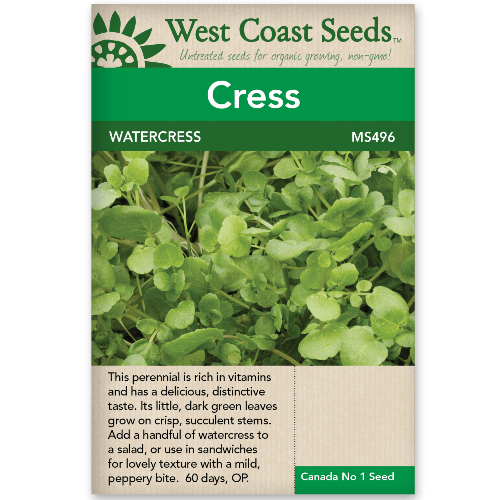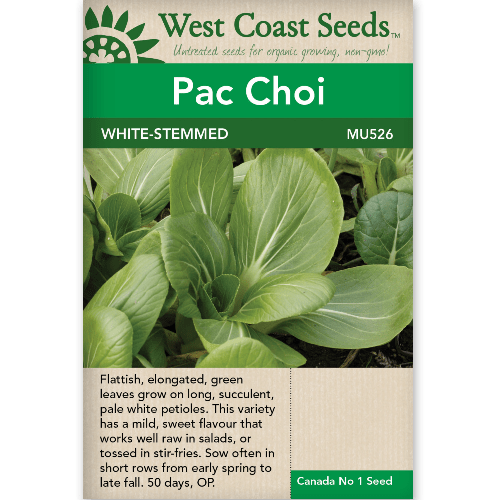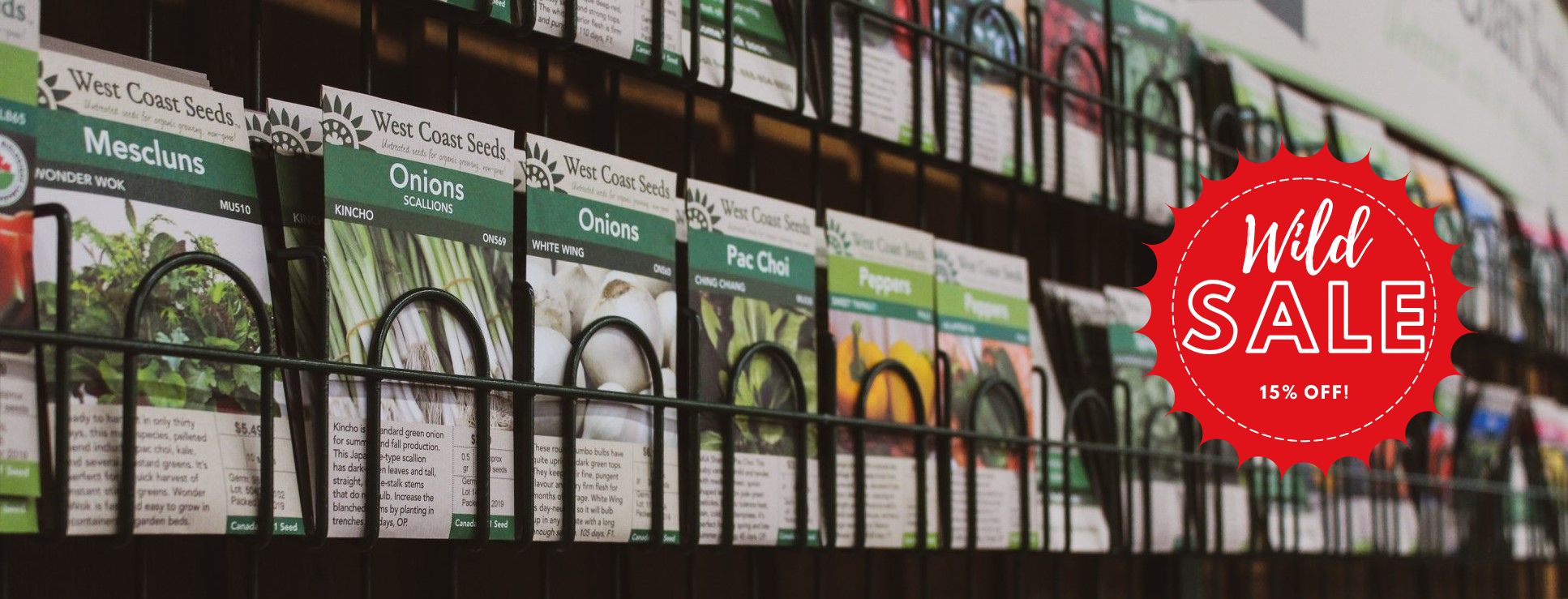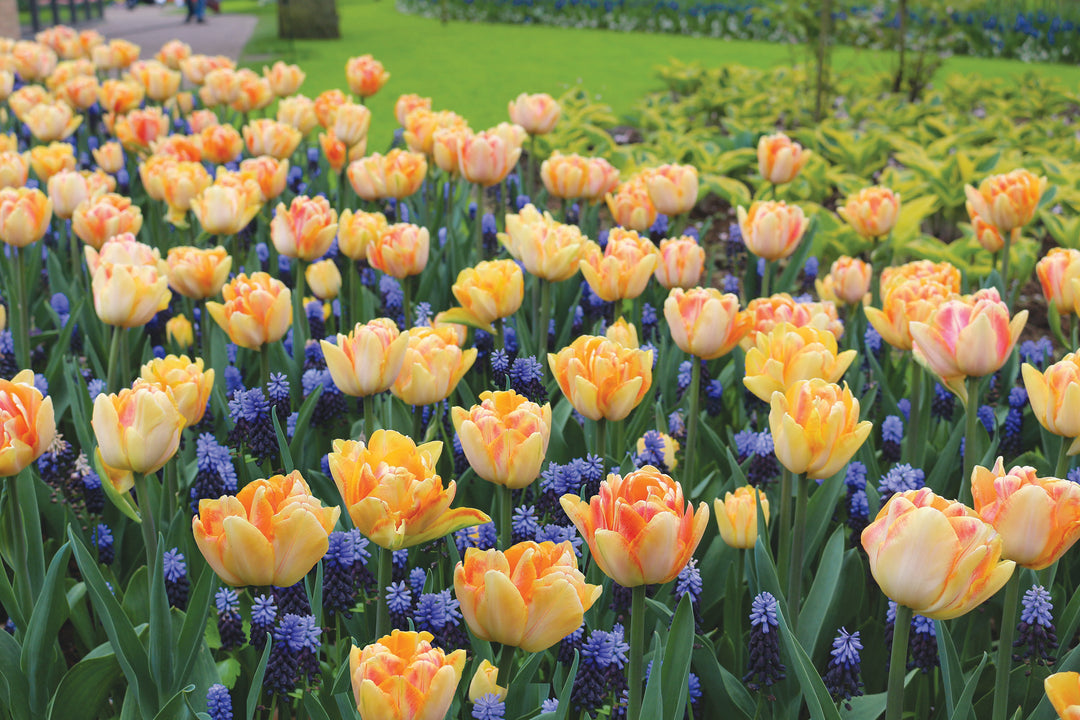
Cress Watercress - West Coast Seeds
- Canada-Wide Shipping
- Flat Rate Shipping on Seeds
- Secure Payment & Checkout
- In stock, ready to ship
- Backordered, shipping soon
Nasturtium officinale
- Delicious, distinctive taste for salads and vegetarian dishes
- Small, dark-green leaves grow on crisp stems
- Direct-seed in full sun near clear running water
- Open pollinated seeds
- Matures in 60 days
True Watercress seeds produce a perennial cress that is rich in vitamins and has a delicious, distinctive taste for salads and vegetarian dishes. Little, dark-green leaves grow on crisp stems that come from thick, long roots. Direct-seed watercress about 5mm (1/4") deep and 1cm (1/2") apart, ideally in full sun near clear running water. Thin plants to 10cm (4") and keep very well watered. Watercress does not thrive in acidic soil, so spread enough lime in the growing area to bring the pH as close to 7.0 as possible. Well finished compost is the other trick that will keep watercress growing rapidly. If you fail with watercress in your summer garden, try planting it beneath a cloche row cover for winter harvesting. The low light levels and cool temperatures seem to be ideal.
0.25g (Approx. 1117 Seeds)
Seed every three weeks from March to September for a continuous harvest. Provide frost protection with a cloche or heavy row cover starting in late October, and many mesclun types and mixes will continue to grow all winter.
Plant in a block or in a wide row. Sprinkle the seeds evenly over prepared, moist soil. Try to space seeds about 1cm (½”) apart. Cover lightly with soil, and firm them in. Four grams of seed will plant a 12m (40′) row that is 7cm (3″) wide, so don’t plant the whole packet at once. For container growing, choose containers that are at least 10cm (4″) deep. Wider is better. The most common mistake is over-planting.
Moderately fertile soil – particularly if you’re planning mutliple harvests. Dig in 1 cup of complete organic fertilizer for every 3m (10′) of row. For containers, use peat or coir based mix with compost added. Water regularly. If growth slows after harvest, use a bit of kelp or fish based fertilizer to provide a boost of nutrition for the next growth spurt.
There are two methods of gathering salad greens. You can use scissors to cut everything about 2-5cm (1-2″) from the ground, when the plants are about 10-15cm (3-4″) tall. Or, you can pick individual leaves as they’re needed. The first cutting may contain more brassicas than lettuces (arugula, mizuna) but if you cut the mix back when the leaves are still small, the lettuce will catch up. The salad greens will regrow for a second harvest in another 2 or 3 weeks.
Slugs love baby greens and flea beetles love brassica leaves.
Canada Shipping
All regular packaged seed* orders have a flat rate shipping fee starting at $6.85 for Letter Mail shipping and $14.85 for Expedited Shipping.
*Some Bonus Packs, Sprouting Seeds, Bulk packs, Sprinkle Bags, and Sprinkle Cans will only be available with Expedited Shipping due to larger packaging and weight.
US Shipping
US Shipping has been suspended indefinitely. We apologize for any inconvenience this may cause. We hope to serve our US customers again in the future.






